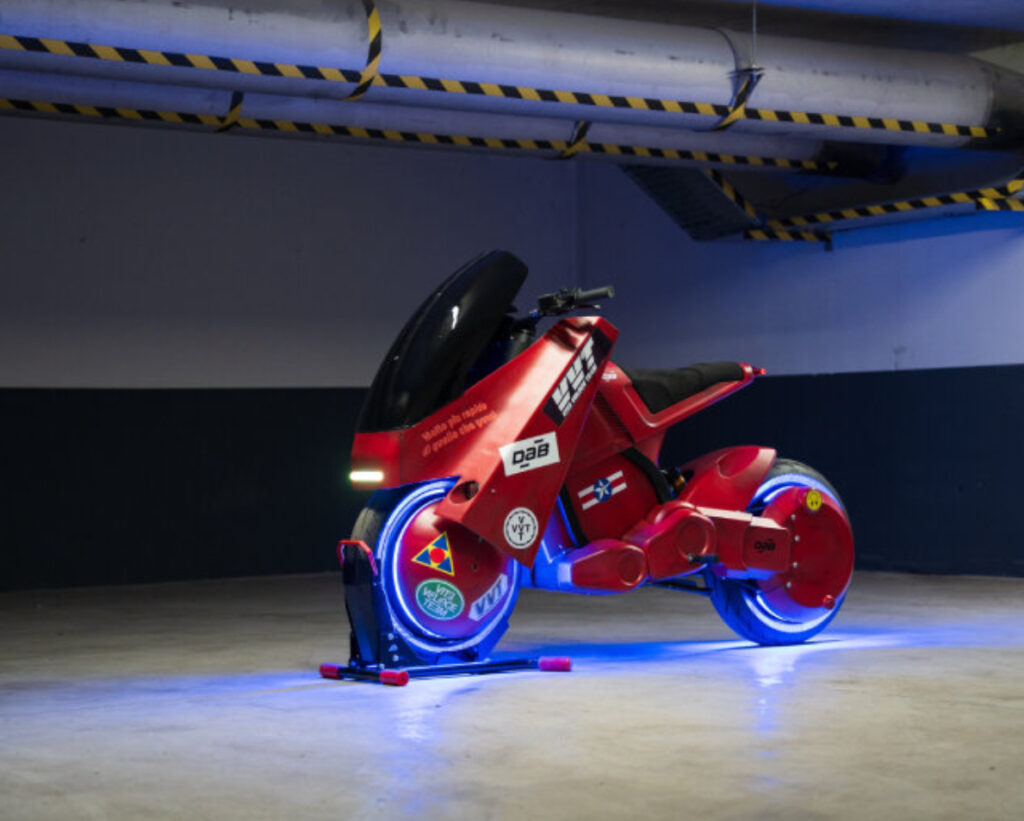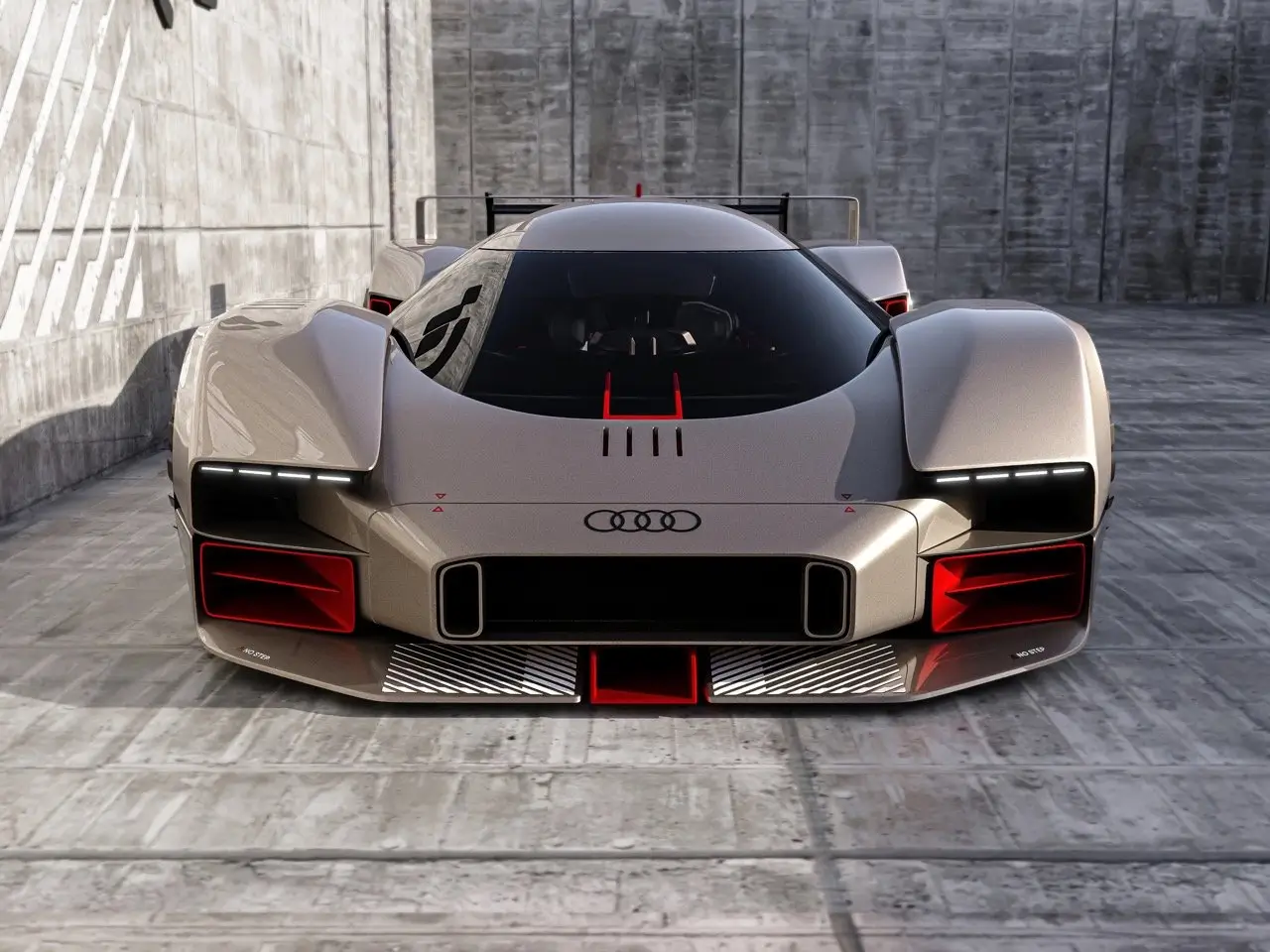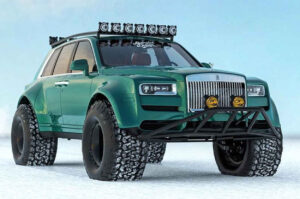When Shotaro Kaneda first screeched across Neo-Tokyo’s neon-bathed streets in Akira (1988), his low-slung, impossibly sleek red motorcycle became more than just a vehicle—it became an icon. Part symbol of cyberpunk futurism, part adolescent revolt, and entirely unforgettable, the bike has inspired generations of fans, artists, and engineers. But few tributes have so fully captured the vehicle’s radical essence as the new, one-off 3D-printed electric motorcycle designed by DAB Motors and VVT (Vita Veloce Team).
Unveiled first at Colombian reggaeton artist J Balvin’s birthday celebration, this project doesn’t just reference Akira—it reanimates it. Developed through a confluence of AI-assisted design, next-generation 3D printing, and meticulous hand-finishing, the motorcycle presents a vision of mobility that feels ripped from both manga panels and industrial design futures.
Genesis: A Ride Born from Anime and AI
The collaboration between DAB Motors and VVT signals a new mode of co-creation—one where digital tools, cultural memory, and human craftsmanship are no longer siloed, but symbiotic. The idea was sparked through J Balvin, the global music superstar and a co-founder of VVT alongside designer Mattias Gollin. Their shared obsession with Akira and futuristic design led to a conversation with Simon Dabadie, founder of DAB Motors, one of Europe’s most forward-thinking boutique electric motorcycle manufacturers.
From the beginning, the brief was bold: don’t just imitate Kaneda’s bike—reinterpret its essence for a post-carbon, post-industrial world. AI tools were employed to simulate wind drag, material flow, and form ergonomics, while still preserving the hard silhouette and aggressive stance that defined the original anime design.
Design: Monolithic Forms and Lived-in Futures
The final result is as much a sculpture as a motorcycle. The 3D-printed bodywork—a single, flowing shell—encloses the entire mechanical skeleton, leaving only the thick, fat tires exposed. It creates an illusion of mass and velocity, like the bike is moving even when it’s parked.
The matte red finish is hand-patinated, echoing the scuffed battle-hardened aesthetic of Kaneda’s bike, not a showroom polish. You won’t find chrome or gloss here. Instead, each imperfection—scratches, scuffs, and subtle gradients—speaks to a philosophy of pre-aged authenticity, as though the motorcycle had a past life in a fictional dystopia.
There’s even a tinted windscreen integrated into the fairing, not only for aerodynamics but to further evoke the anime’s vintage-futurist aesthetic. From the side, the silhouette flirts with Akira’s graphic aggression; from the front, it’s all monolith—minimalist and menacing.
Engineering Meets Aesthetics: Form with Function
While the styling pays homage to speculative fiction, the motorcycle’s internals are rooted firmly in contemporary innovation. DAB Motors is no stranger to engineering excellence. Their prior ventures, including the Concept-E line, have already proven that electric mobility can be beautiful, silent, and powerful.
The Kaneda-inspired bike builds on that platform with next-level design parameters. Every visible and invisible part has been modeled for weight distribution, torque flow, and battery housing efficiency. The monocoque structure, built with additive manufacturing, reduces the need for secondary assemblies. This means fewer bolts, seams, and welds—and more space for seamless design expression.
Unlike traditional motorcycles, where parts are bolted onto a tubular frame, this machine is an integration of skin and skeleton, with the 3D-printed shell contributing structural support. It is both exoskeleton and armor, deflecting not bullets, but the limitations of legacy motorcycle design.
Cultural Synergy: From Neo-Tokyo to Global Streets
There’s something poetic about debuting this electric motorcycle at J Balvin’s birthday—a musician who himself sits at the intersection of global pop, fashion, and futurism. In many ways, this bike represents what Balvin’s career embodies: a refusal to be confined to genre, geography, or expectation.
This one-off creation isn’t just a fan homage; it’s a symbol of how deep-rooted cultural narratives like Akira continue to influence the tools and dreams of today’s designers. It affirms that fictional futurism has become design instruction—with anime aesthetics no longer a niche interest, but a guiding language for shaping real-world technologies.
It also hints at a world where motorcycles are emotional extensions, not just vehicles. This isn’t a machine you commute with—it’s a character in your narrative. It glows with symbolism, movement, and subversion. In the same way Kaneda’s bike became a reflection of his rebellion, this motorcycle is a mirror for anyone challenging the norms of transport, style, and identity.
The Philosophy of Imperfection
What makes this creation truly compelling isn’t its perfection—but its commitment to imperfection. In an era of hyper-polished product releases and sterile concept art, this motorcycle dares to show wear, to imply that it has a story before you even ride it.
This approach echoes the Japanese design principle of wabi-sabi—beauty found in the incomplete, the imperfect, and the impermanent. The hand-scratched paint, the subtle asymmetry in some surfaces, the way the body feels both brutal and graceful—it all contributes to the bike’s emotional realism.
Unlike typical EVs, which often lean on futuristic sterility, DAB and VVT’s motorcycle feels alive. It’s not a gadget. It’s a companion.
Impression
DAB Motors and VVT haven’t just built a motorcycle—they’ve created a manifesto. A bike that speaks fluent anime, breathes electric ambition, and moves like a digital ghost through the material world. It proves that when art, engineering, fandom, and imagination converge, the result is more than transportation—it’s transformation.
What was once ink on a manga page now roars in matte red across tarmac. And in doing so, this one-off, 3D-printed electric motorcycle doesn’t just ride—it rewrites what motorcycles can mean. From Shotaro Kaneda’s dream to J Balvin’s birthday stage, it’s no longer fiction. It’s here.
No comments yet.









